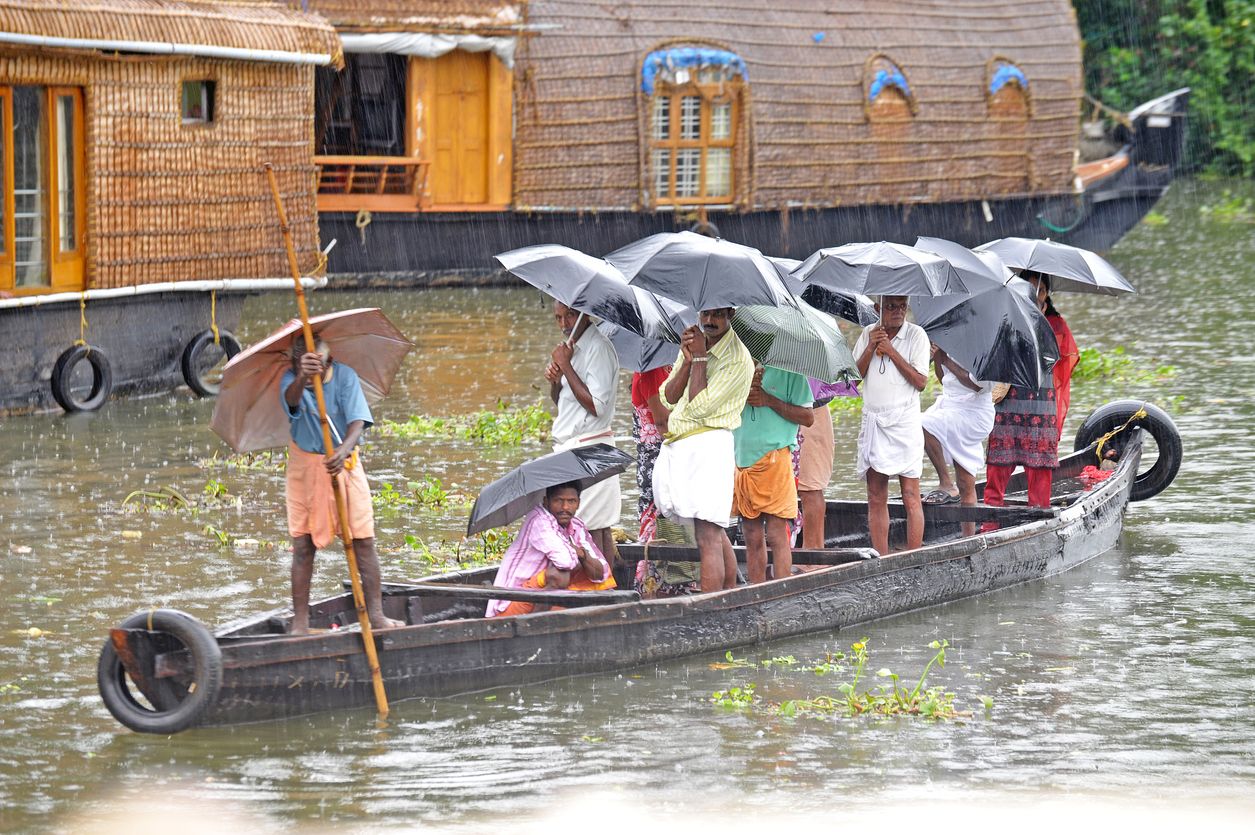
Kerala floods: Why state fails to get its rain alerts right every year

For a state that has romanticised rain for long, the monsoon has become a nightmare for Kerala, especially in the last five years. Every time it rains for extended hours, there is panic and mayhem, stoking memories of the 2018 devastating floods.
The state was on its toes when the weather forecast predicted another gloomy week (as many as 11 districts were put on red alert), but once again the nowcast warning was way off the mark. ‘Nowcast’ refers to the description of present weather conditions or a forecast of those immediately expected.
Also Read: High alert in Kerala, invoking memories of devastating 2018 floods
Well, once it pours, little can be done, but the puzzling question is: could the weather department have predicted the pattern of the rain/floods? Going by the recent trend, the Meteorological Department (IMD) apparatus has clearly failed and Kerala says the Centre has not addressed its concerns and demands despite repeated requests and representations. Like setting up localised weather modelling systems to improve the accuracy of forecasts.
So what does Kerala need?
Doppler Radars
It has been a long pending demand to set up another Doppler Radar on the Kozhikode–Wayanad border, apart from the one in Kochi, which IMD directly operates.
“The second one belongs to the Vikram Sarabhai Space Centre (VSSC) and operates only on demand,” says Sekhar L Kuriakose, member-secretary, Kerala State Disaster Management Authority (KSDMA).
Bearing the brunt of the increasingly fluctuating weather patterns, Kerala requires both Doppler Radars to function full time in addition to the one in North Kerala.
As per KSDMA, the two Doppler Radars did not provide accurate data on August 8, 9 and 10 in 2018, the days when the state’s worst floods in recent memory wreaked havoc. In September 2018, the Additional Chief Secretary wrote to the Ministry of Home Affairs, seeking to set up another Doppler Radar, besides making the existing ones fully functional.
In 2019, 2020 and 2021too, Kerala witnessed torrential rain, landslides and cyclones and widespread destruction though not along the lines of the 2018 horror.
In 2021 too, Revenue Minister K Rajan wrote to the Centre, with the same demand, but replies never came.
Automated Weather Stations
In 2021, the IMD agreed to Kerala’s demands to establish 100 Automated Weather Stations (AWS) for which the KSDMA was to provide land for the same. In fact, Kerala has just 85 AWS, while the required number should be 256.
That aside, five Cyclone Warning Dissemination Systems (CWDS), set up by IMD, have been dysfunctional. This too was pointed out by the Additional Chief Secretary in his 2018 letter. Five monsoons later, it has not been fixed yet.
Also Read: Rain-battered Kerala battles big menace: Flood tourism
Real-time monitoring of rainfall is also particularly important in disaster management. “This is seen as a major inadequacy and impedes disaster management activities in the state. The weather forecast provided by IMD has been found inaccurate. This is presumed to be due to the inadequacy of the observation network and the lack of locally customised weather modelling exclusively for the state,” said the 2021 letter by K Rajan to the Centre.
Though Kerala has accessed the service of private players like Skymet and IBM Weather Company, the state cannot depend on data provided by such private players because of statutory limitations. As per National Disaster Management Authority (NDMA) guidelines, state governments and State Disaster Management Authorities should officially rely only on IMD’s weather forecast.
Weather goes for a toss
In 2021, Kerala experienced excess rainfall during the North East monsoon period (October –November). Between October 11 and 25 last year, Kerala experienced 69 landslides and 57 people died in various rain-related incidents last year.
According to the latest weather forecast, Kerala can’t relax yet. The southwest monsoon is expected to last till September and with the limited infrastructure, the weather department can’t do much.
Also Read: Kerala floods: Wild elephant rescues itself, wins internet

